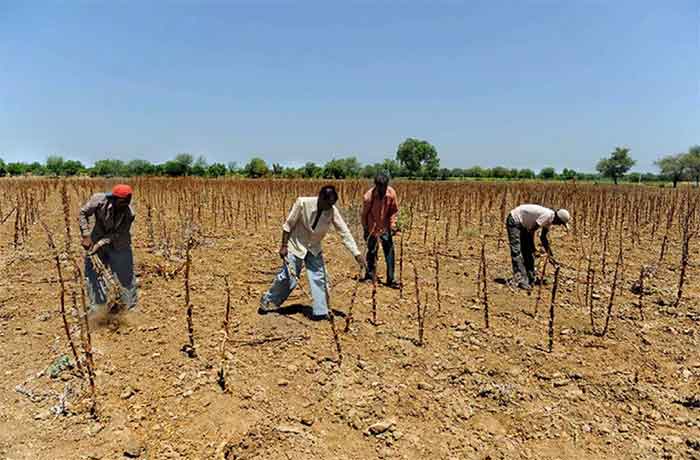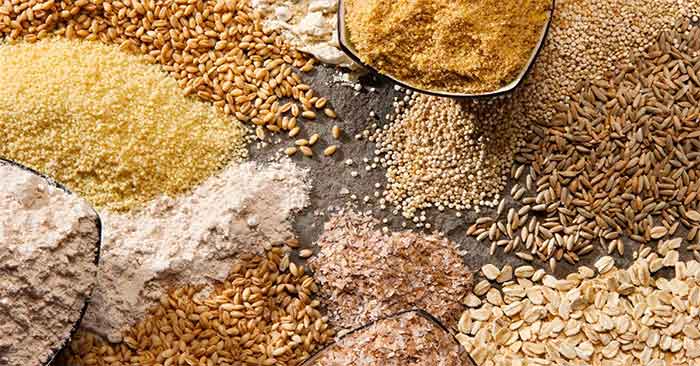
India has been implementing some of the biggest nutrition programs for decades and while some improvement in nutrition is indicated, on the whole malnutrition levels remain high. This needs to be explained at several levels, and one explanation that should not be neglected relates to soil health. It is increasingly realized by scientists that soil health is closely related to nutrition of crops which are grown in this soil and if soil health deteriorates in important ways, then the nutrition of crops grown in this soil can decrease too. In a note of the Food and Agriculture Organization (FAO) of the United Nations titled Healthy Soils Produce Healthy Crops it has been stated that soil quality is directly related to food quality, apart from food quantity.
Soil health has deteriorated badly in farms of most countries due to heavy soil erosion as well as relentless increase in the use of chemical fertilizers, pesticides and weedicides. Even the persistent use of heavy machinery on farms has been harmful for soil. A recent article in The Hindustan Times has quoted a senior official of the National Rainfed Area Authority (India) as stating that the organic matter of soil has declined to less than one third of of its previous level during the last 70 years.( The crucial interlinking of soil degradation and health, HT, August 25 2022). This article also mentions research at the National Institute of Nutrition ( India) which has revealed decline in carbohydrates by a little over 9 per cent and of protein in whole brown lentils by over 10 per cent between 1989 and 2017, while a decline in proteins, calcium, iron and phosphorus was also noticed in various fruits and vegetables.
It is well-known that excessive use of chemical fertilizers causes a loss of flavor of food; what is less known is that is can also cause a loss of nutritive value and even create some serious health problems. According to prominent nutrition expert C. Gopalan, “the use of high analysis chemical fertilisers, which is part of the modern intensive agricultural technology, had not always gone hand-in-hand with appropriate measures for soil testing and soil replenishment, with the result that, as shown by the studies of FAO (1982), there are disturbing evidences of micronutrient depletion of soils in some areas; these are likely to be eventually reflected in impaired nutritive value of food-grains grown in such soils.”
Such a clear opinion of a very senior nutritionist should not be taken lightly and should have been followed-up more extensively, but it was not. Such emerging scientific opinions and evidence/data on which this and similar opinions were based were pushed aside, away from policy, as these came in the way of powerful forces which wanted Indian agriculture to continue along the path of chemical fertilizer and pesticide intensive farming.
Moreover, it is not just a question of nutrition value being impaired, serious health hazards are also involved when soil health is badly harmed by excessive use of agro-chemicals.
Richard Douthwaite has written in his recent book ‘The Growth Illusion’, “Nitrogenous fertilizers can raise the amount of nitrate in the final crop to four or five times the level found in the compost-growing equivalent, while at the same time cutting vitamin C and dry matter levels. This change is potentially serious, since nitrates can be turned into powerful carcinogenic nitrosamines by bacteria found in the mouth, while vitamin C has been shown to protect against cancers.”
While organic matter in the soil, the product of on-site biological decomposition, provides balanced nutrition to soil, unbalanced nutrition provided by various kinds of chemical fertilizers can never equal this and the deficiency of some micro nutrient or the other keeps emerging. Then attempts are made to make up for this by various artificial additives mixed in food. But artificial additives cannot be the equivalent of nutrition provided by natural wholesome food grown in healthy soil. In addition some additives or their excess are also harmful for health. Recently there has been a lot of objection to the government efforts for fortification of rice and wheat, and the use of the public distribution system to push this fortification. This can bring gains to some private business interests, but only at the cost of serious health hazards, as several timely warnings have been stating at an early stage. On the other hand, soil improvement is the real path of improving balanced nutrition in crops in sustainable and healthy ways. Time honored rotations and mix farming practices which helped farmers to maintain soil health have been badly disrupted in recent years under the impact of unwise policies which did not even understand the importance of these practices, even the more obvious ones like cereal-legume mixed farming or rotation..
There has been a big increase in recent years in the number and quantity of additives used by the food processing industry, including flavors, colors, emulsifiers, preservatives and an amazing range of other additives. The London Food Commission noted that about 3,800 additives were being used to perform about a hundred functions. Only about a tenth of the additives were subject to government control. The commission wrote “A single meal may contain a cocktail of 12 to 16 additives. The combinations of additives may react with each other and with foods to produce new chemical substances.” A wide range of health hazards has been reported for an equally wide variety of food additives.
The entire question of the link between soil health and nutrition should be better understood, as also the futility of first creating nutrition deficiency in staple food and then trying to making this up by artificial additives. First nutrients are taken away from crops by harming soil in various ways. Then a lot of nutrients are taken away by harmful processing which depletes nutrition and adds much that is harmful. This is bound to lead to serious malnutrition manifesting in under-nutrition as well as obesity in different contexts, and then the situation is made worse by business promoting strategies like fortification. The basic mistakes which arise from promoting big business, instead of being corrected, are worsened further by promoting more big business interests.
Apart from the science of soil malnutrition links to health malnutrition, the political economy part of the peculiar situation should also be reckoned with to understand why real solutions are neglected and bad ‘solutions’ are imposed. Ultimately care and nurturing of soil can take place best in small farmer based social agro-ecology systems, but the brokers of big business interests who sit in positions of power are determined to thwart rather than promote the spread of such systems. Hence the protection of soil health is not just a technological question but very much also a political question, tied up closely with the spread of social agro- ecology, strengthening of small farmers and providing at least some land to landless peasants.
Bharat Dogra is a Honorary Convener, Campaign to Save Earth Now. His recent books include Protecting Earth for Children, Man over Machine and India’s Quest for Sustainable Farming and Healthy Food.

















































